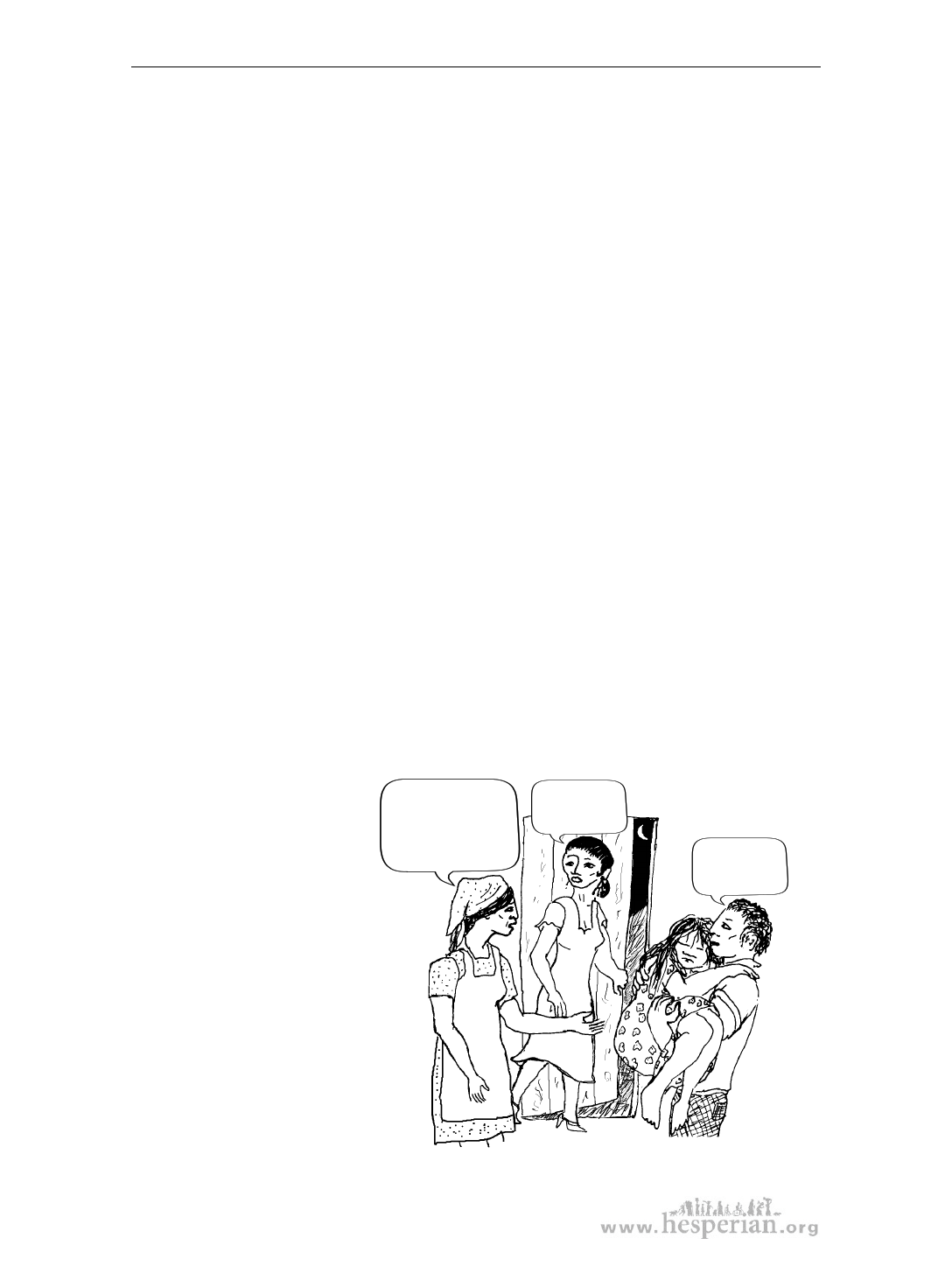
Chapter 12: Pushing – Stage 2 of labor
B aby is in a diffi cult o r impo ssible birth position
See page 190 for a description of difficult or impossible birth positions.
If the baby is lying facing the mother’s stomach, it may be easier for the mother
to push in either the hands-and-knees position or in the squatting position. This
may help the baby turn to face the mother’s back as he comes down.
Sometimes the baby’s head is tucked down the way it should be but it is off to
one side (asynclitic). It may help if the mother walks, lifting one leg up at a time
— as if she were walking up stairs or a steep hill.
If the baby is face first or forehead first, the birth may be difficult or impossible.
If you think this may be the problem, get medical help right away. While you are
traveling, help the mother stop pushing (see page 207).
B aby is unable to fi t thro ugh the mo the r’ s pe lv is
If the inside of a mother’s pelvis is very narrow, or a baby’s head is very big,
the birth may slow or stop. (The size of the outside of the mother’s hips does not
matter.) If the mother keeps pushing for hours with no progress, her womb may
tear open, she may get a fistula (see page 273), or she and the baby may die of
exhaustion.
If the baby cannot fit through the mother’s pelvis, the first stage of labor was
probably longer than normal too.
If there is no progress — get medical help
If you have tried different methods for bringing the baby down — better pushing,
different positions, emptying the bladder, rehydration drink, acupressure, and any
other methods you know — and you still see no progress after 1 hour of good
pushing, take the mother to a medical center. It is not safe to wait until more
warning signs appear.
If you are far from a
medical center, do not wait
more than 1 hour — get
medical help right away.
Thousands of women die
every year because they
did not get medical help
soon enough.
We should not
wait any more.
Let’s go to the
hospital.
I’ll get
the truck.
I’ll carry
her over.
204
A Book for Midwives (2010)